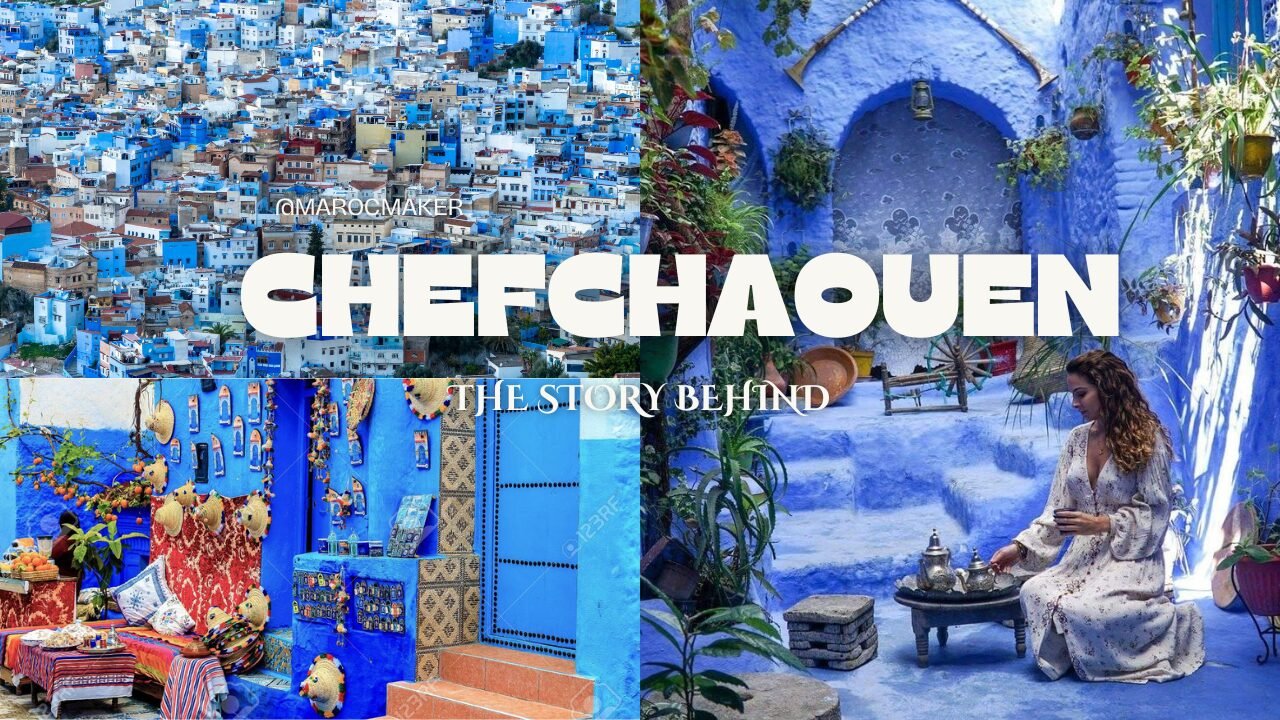One of Morocco’s most attractive locations is the little Moroccan town of Chefchaouen, sometimes referred to as Chaouen by locals. Nestled in the glorious landscape of the Rif mountains, it boasts one of the country’s most charming medinas, famous for the different shades of blue paint that cover the walls of the town’s various houses and businesses.
The elders of Chefchaouen described the region as being developed outside the fortress with the construction of the medina, a traditional area of houses and other commercial buildings. During the Middle Ages, local tribes of Spaniards and Jews populated the area.
Many years later, the Spanish colonized Chefchaouen in 1920, making it part of the Spanish territory in Morocco. The region saw a large influx of Jews fleeing Europe during the Second World War. Most of these Jews left the region in the late 1940s and early 1950s to live in Israel. After Morocco attained independence in 1956, the city was given back to them.
The reason behind the blue walls – Chefchaouen

There are several beliefs as to why the city walls were painted blue. Here they are:
Following Jewish customs and culture – Chefchaouen
In Jewish beliefs, the color blue represents the sky, which in turn reminds people of heaven and God. Jewish communities therefore have a long-standing custom of painting objects blue and dying textiles, particularly prayer rugs, blue.

So, what caused blue fever to spread throughout the medina? Some people believe that Chefchaouen’s early Jews introduced the practice of painting walls blue, in keeping with their religious and cultural practices The blue walls of Chefchaouen, according to many locals, were exclusively present in the Mellah, the town’s Jewish section, until quite recently. Older residents say that most of Chefchaouen’s buildings in the medina were white in their younger days.
Painting the walls blue probably took place in the 15th century, shortly after the town was founded. Some say that the wave of Jewish immigrants in the 1930s was the direct cause of the addition of new shades of blue to the city.
Representing the color of water – Chefchaouen
Chefchaouen’s walls are daubed in all shades of blue to represent the color of the sparkling Mediterranean, according to some locals. Others, however, believe that the blue symbolizes the importance of the Ras el-Maa waterfall, where the city’s inhabitants obtain their drinking water. Water, essential to life, enables a community to thrive in the hostile environment of the arid mountains.
Keeping cool – Chefchaouen
Some locals say that blue helps keep their homes cool in the warmer months. This probably wasn’t the original intention, but it’s a valid reason for the idea to continue into modern times.

To keep mosquitoes away – Chefchaouen
Some people think that the city’s blue decorations serve as a mosquito deterrent. Mosquitoes prefer to live close to bodies of water, but they dislike being in the actual water. The colors of Chefchaouen’s buildings can certainly resemble flowing water. It’s possible that residents noticed fewer mosquitoes in the Jewish part of town and decided to do the same to rid their homes of the pests.
Attracting tourists
While this was certainly not the original reason for Chefchaouen’s blue paint, attracting tourists is a major reason why the practice continues. Chefchaouen used to be an ordinary destination along the trade route between Fez and Tangier. But today, it’s a global tourist destination.

To look good, soothe and blend in
Ask some locals why the city is blue, and they may tell you it’s simply because blue is attractive and has a calming effect. In Islamic culture, blue is said to be a color of happiness and optimism.
Might it be that some homes close to the Mellah chose to imitate the hue initially painted by Jewish settlers because they liked it, creating a new trend that has spread from house to house?
Chefchaouen’s main attractions

In addition to nearby natural attractions and activities, such as hiking in the mountains and visiting the Akchour waterfalls, one of the main things to do in Chefchaouen is to stroll through the town’s medina and admire the picturesque scenes that unfold on every street corner and staircase. Less frenetic than in other Moroccan cities such as Marrakech and Fez, visitors can discover a multitude of traditional Moroccan products. Blue-and-white paintings on canvases of various sizes depicting scenes of the city and local life are particularly pleasant souvenirs.
In the old kasbah itself, with its shades of brown, beige, muted red and ochre, tourists will find the small ethnographic museum, sometimes also called the Kasbah Museum. It houses exhibitions and displays relating to the history, culture and development of the region.









